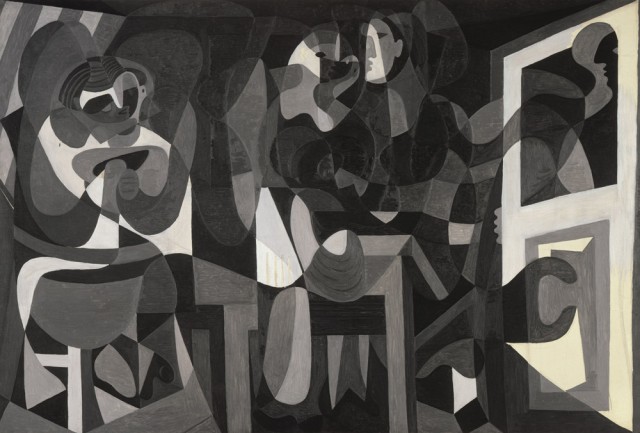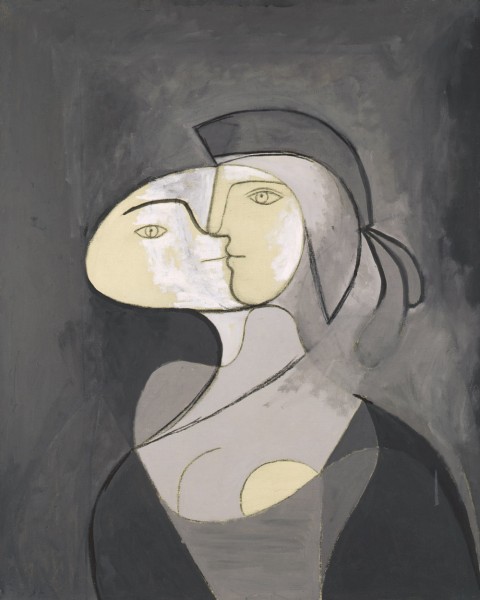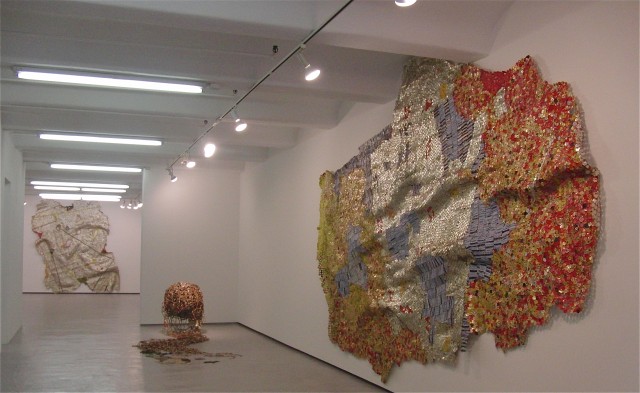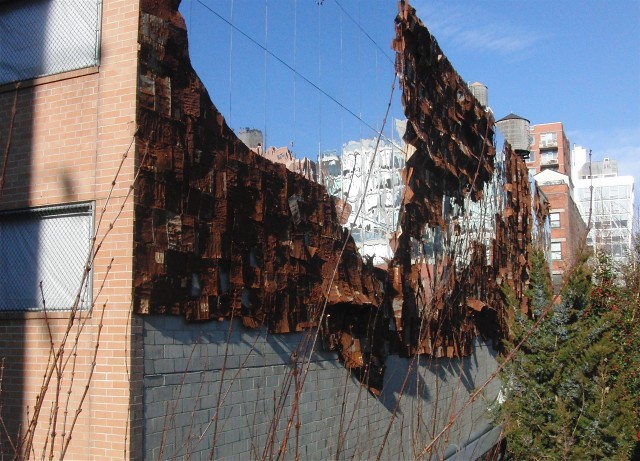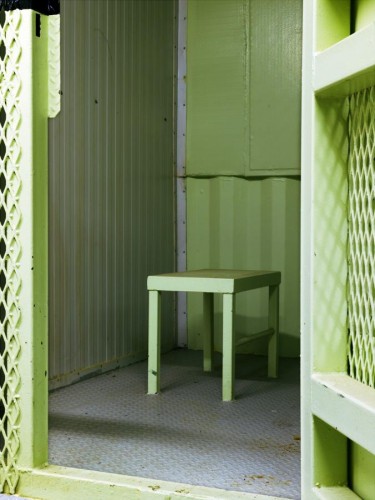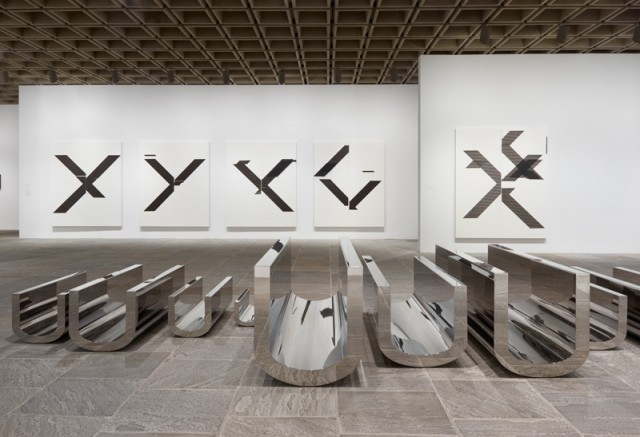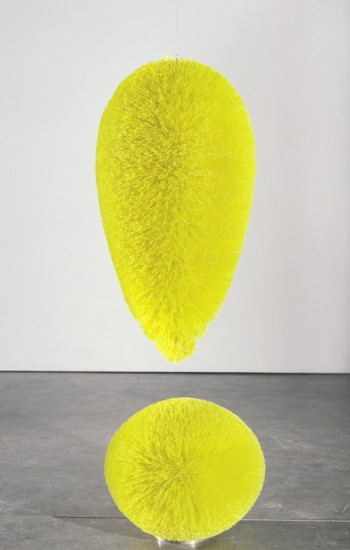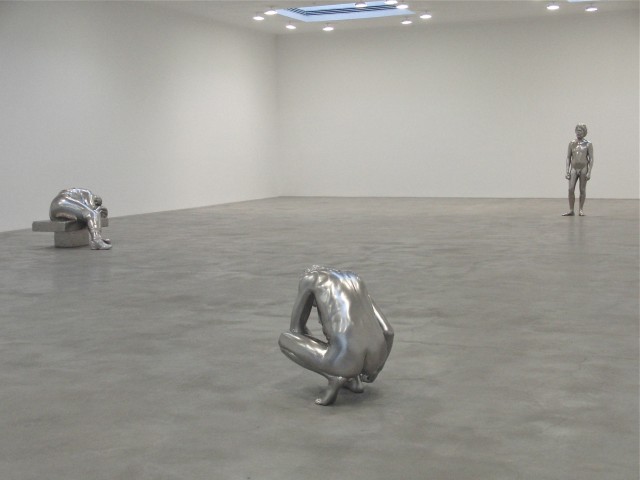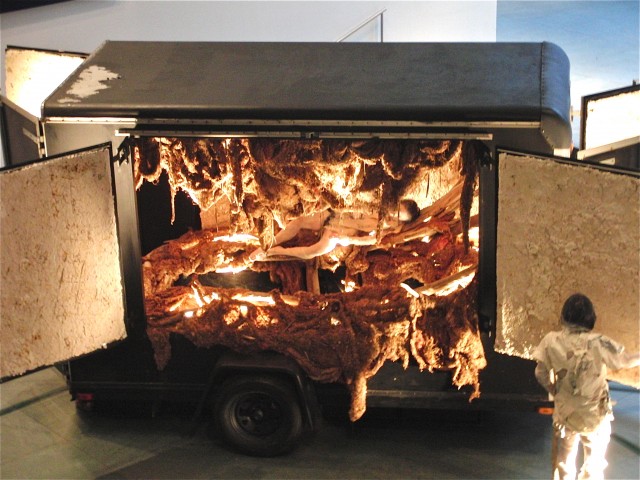
Eiko and Koma will be performing THE CARAVAN PROJECT through January 21 at MoMA (photo by twi-ny/mdr)
PERFORMING HISTORIES: LIVE ARTWORKS EXAMINING THE PAST
Museum of Modern Art, Agnes Gund Garden Lobby
11 West 53rd St. between Fifth & Sixth Aves.
Through January 21
Museum admission: $25 ($12 can be applied to the purchase of a film ticket within thirty days)
212-708-9400
www.moma.org
www.eikoandkoma.org
Although Eiko & Koma refer to their 1999 work, The Caravan Project, as “a vehicle for art activism,” it does not seek to make any comments on political or social issues. Instead, it was created to help promote art, particularly bringing it to those who either don’t have access to it or don’t know much about it. Reconfigured as part of their ongoing Retrospective Project, the 2012 version of Caravan has pulled into the MoMA lobby in front of Rodin’s “Monument to Balzac,” where the New York-based Japanese couple are performing during all hours the museum is open, through January 21. Placed right by the entrance, it forces people to see it on their way into MoMA as well as on their way out, so even if visitors intend to make a beeline straight for a specific exhibit, it is hard to miss an unhooked trailer that opens on all four sides, with a man and a woman either inside it or walking around outside, wearing decrepit white material that seems to be molting off their bodies as they move ever so slowly. It also can be seen without having to pay the $25 admission charge, furthering the dancers’ desire to bring the project to people who might not be able to afford hefty museum fees.
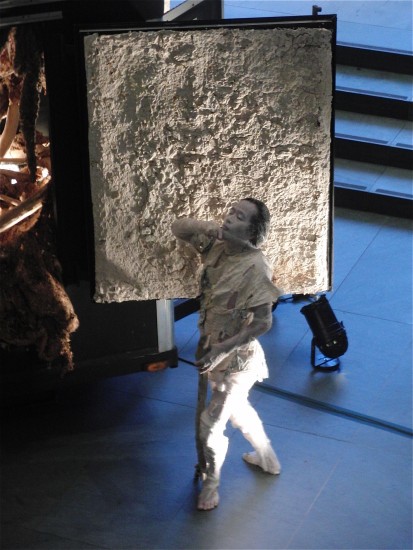
Koma emerges from trailer and takes slow walk in MoMA lobby (photo by twi-ny/mdr)
Held in conjunction with the “Tokyo 1955-1970: A New Avant-Garde” show, the “Art Theater Guild and Japanese Underground Cinema, 1960–1986” film series, and the “Performing Histories: Live Artworks Examining the Past” exhibition, The Caravan Project is for the first time being presented indoors without the Jeep that drives them to the site at the beginning and takes them away at the end. Instead, Eiko and Koma have become one with the museum, much as their work throughout the years has seen them merge with the natural environment, either real or constructed, in works such as Naked and Water. With The Caravan Project, at times they’ll be playing to a large crowd surrounding the trailer, where visitors are allowed to get within three feet of them, while at other moments there might be no one watching, just museumgoers passing by without even glancing their way, but that is all part of this compelling living installation. The trailer itself is filled with bare tree branches and beehive-like detritus above and below, with Eiko and Koma, in all white, emerging in between as if coming out of cocoons following an apocalyptic nightmare. Spiderwebs are wrapped around their faces, making it appear that they’ve been dormant for a long time before rising again. Their Butoh-like movements are painstakingly slow; it is electrifying when they actually touch each other, appearing to be so desperately in need of human contact in this barren, desolate scene, the only sound coming from the crowd itself. “Performing Histories” continues through May 25 with such upcoming programs as Kelly Nipper’s Tessa Pattern Takes a Picture, Fabian Barba’s A Mary Wigman Dance Evening, and El Arakawa’s Paris & Wizard: The Musical.
